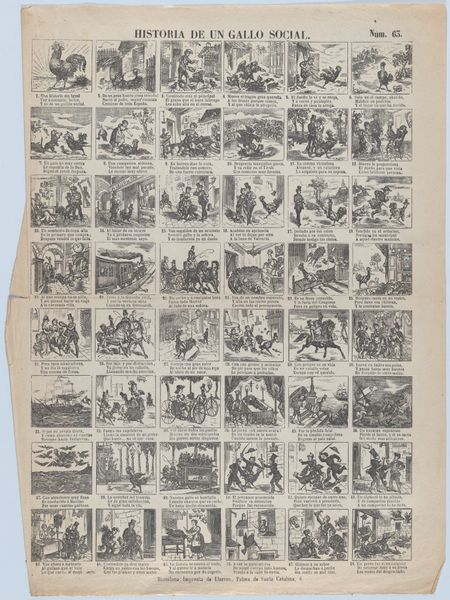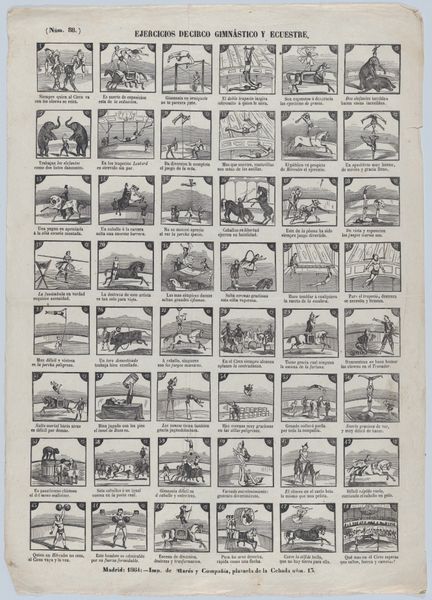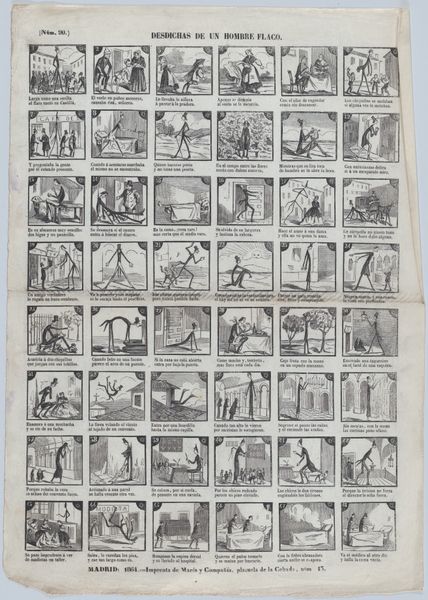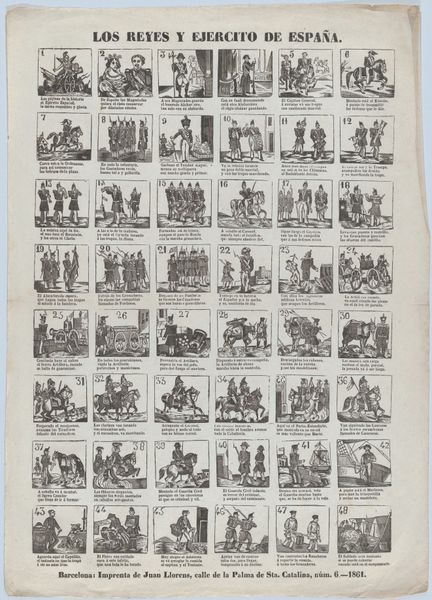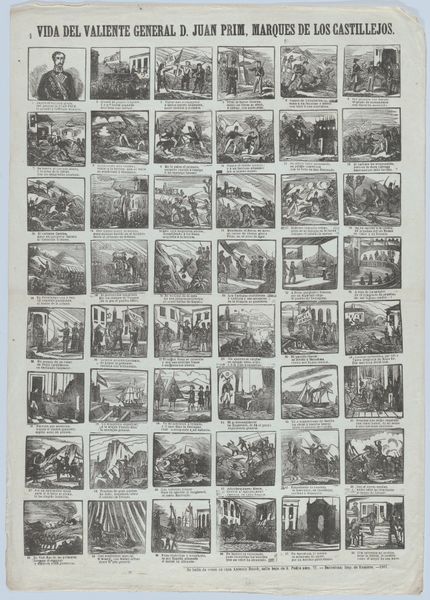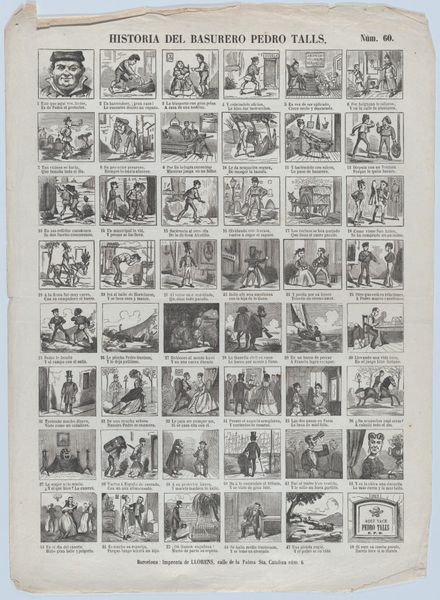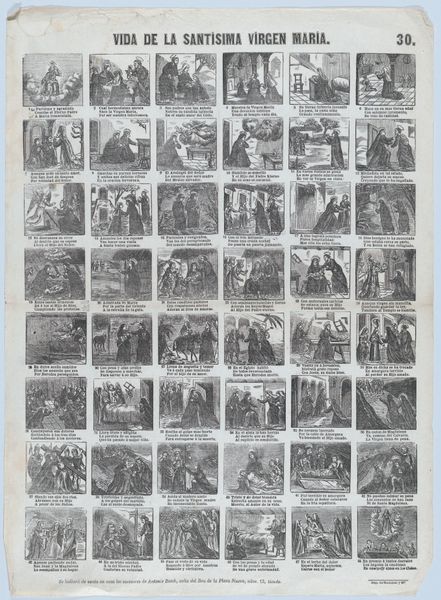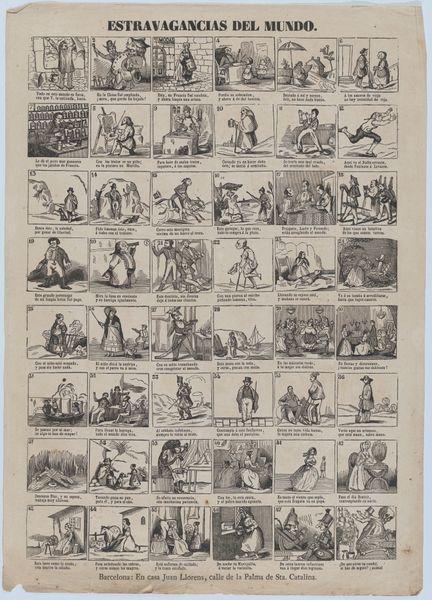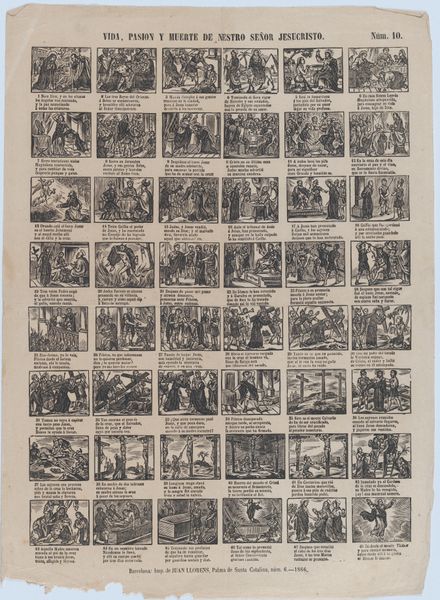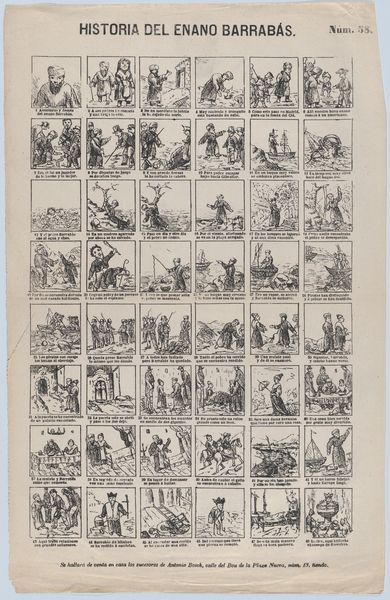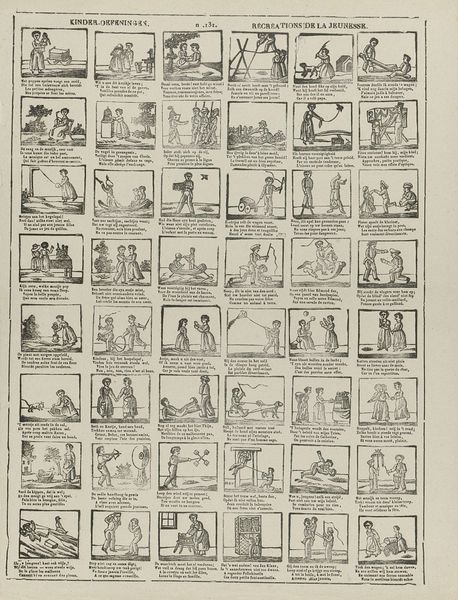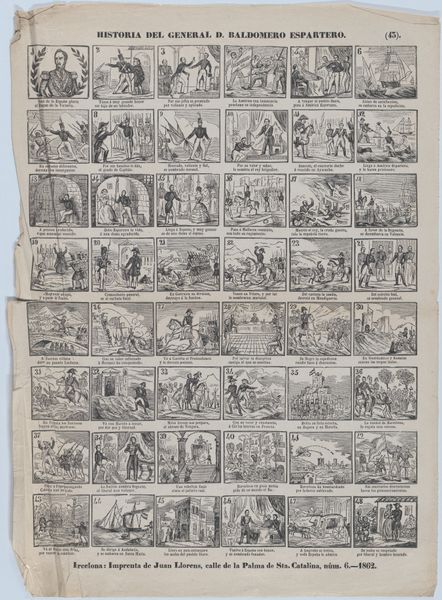
Broadside with 48 scenes depicting the equestrian and gymnastic moves of the royal circus 1860
0:00
0:00
drawing, graphic-art, print, poster, engraving
#
drawing
#
graphic-art
#
16_19th-century
#
narrative-art
# print
#
figuration
#
orientalism
#
horse
#
cityscape
#
genre-painting
#
history-painting
#
academic-art
#
poster
#
engraving
Dimensions: sheet: 17 5/16 x 12 5/8 in. (44 x 32.1 cm)
Copyright: Public Domain
Curator: This fascinating broadside, titled "Broadside with 48 scenes depicting the equestrian and gymnastic moves of the royal circus," was created in 1860 by Juan Llorens in Barcelona. It is an engraving printed on paper, essentially a poster advertising a circus. Editor: What immediately strikes me is the almost comic-strip like arrangement of the 48 small scenes. There's a wonderful sense of movement captured in these static images; each miniature composition, though simple, feels so dynamic. Curator: It’s a visual feast! The repetitive grid structure gives the impression of both documentation and promotion, very typical for commercial prints during that era. The circus, then as now, was a significant form of public entertainment, and posters like this played a crucial role in attracting audiences. We can assume that this object represents the popularity of equestrian shows among the middle and upper classes. Editor: Agreed. What interests me compositionally is the clever way Llorens suggests depth and volume using minimal lines and cross-hatching. The figures are stylized, but their poses are so effective in conveying balance, force, and skill. I think this adds significantly to the appeal. Curator: I agree. Llorens's work here reflects broader trends in popular culture at the time; circuses acted as communal places and reflected evolving ideas about entertainment. These scenes offer insight into the spectacle of circus life and its reception among the public in mid-19th-century Barcelona. Editor: From a purely visual standpoint, this piece is just delightful! Curator: Indeed. And what a valuable artifact this work is: we can glean many things about culture through the material object. Editor: Ultimately it provides an intimate look into an era gone by and the entertainment culture of the era.
Comments
No comments
Be the first to comment and join the conversation on the ultimate creative platform.
